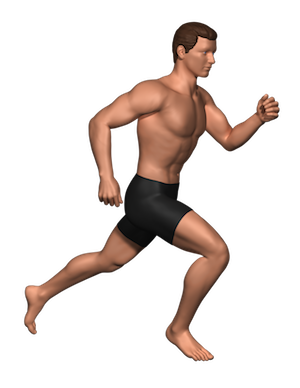With headaches being the one of the most common reasons patients visit a doctor, for many, alternative care is a vital choice. Hundreds of millions of work days are lost each year due to headaches with a cost in the tens of billions. For those unwilling to resort to medications every time they have a headache, chiropractic may identify the treatable cause.
Headaches come in many varieties. We will discuss some of the more common types.
Classic Migration Headache
Over 3 million Americans suffer from migraine headaches. In about 65%, the headache is on one side of the head. The pain is often deep, boring and throbbing. It is exacerbated by light and noise. Nausea and vomiting occur in about 60% of the cases. Attacks usually last many hours.
Triggering factors can be changes in the barometric pressure due to weather changes, stress, menstruation, prolonged periods of rest and oral contraceptives which can lead to depletion of several B vitamins as well as other vitamins.
Anatomically, the upper three nerves of the neck (C1, C2, C3) can readily cause headaches if irritated. The chiropractic approach is to evaluate and specifically adjust the upper vertebrae in the neck to take pressure off the neural system. Migraine sufferers may have a dysfunction in a part of the nervous system called the parasympathetics. Chiropractic upper cervical (neck) adjustments have been shown to promote parasympathetic activity.
Sinus Headache
A deep, pressure-like pain in the forehead, nose and cheekbone region.
Sinuses are hollow cavities in the skull that are interconnected at the nose. While they help to improve the sound of our voices; especially when singing; they primarily produce mucous to moisturize the inside of the nose. If sinus drainage is blocked, sinuses still continue to produce mucous. Now, add bacteria and inflammation in the area and we have congestion (sinusitis). Headache is also a common result. This can affect individuals of any age. Our sinuses are located at the forehead (frontal), cheekbones (maxillary) and at the bridge of the nose and behind (ethmoid and sphenoid). Drainage of the lymph nodes helps to clear the head and neck. Chiropractors have techniques to affect sinus function. How? The sinus membrane is controlled by the Greater Petrosal Nerve which branches off Cranial Nerve VII (Facial). The facial nerve emerges off the brainstem. The upper two cervical vertebrae are also at the level of the brainstem. Subluxation of these vertebrae may affect nerve function at that level. Also, the outer covering of the spinal cord called the dura is attached to the top cervical vertebra (C1 or Atlas) by the dentate ligament. Subluxation of the C1 vertebra may affect proper sinus function.
nial Nerve VII (Facial). The facial nerve emerges off the brainstem. The upper two cervical vertebrae are also at the level of the brainstem. Subluxation of these vertebrae may affect nerve function at that level. Also, the outer covering of the spinal cord called the dura is attached to the top cervical vertebra (C1 or Atlas) by the dentate ligament. Subluxation of the C1 vertebra may affect proper sinus function.
Tension Headache (Stress Headache)
They are the most common type of headache. It is a dull, pressure-like band of pain around the head that can feel like a vice to some people. There can be individual episodes or chronic (over 2 weeks). They are more common in women and are stress induced. Causes can be bad posture and muscular tension in the head and upper neck.
Correction of posture with ergonomic education and gentle chiropractic adjustment of the upper cervical (neck) vertebrae can help relieve nerve irritation and muscular relaxation. In addition, muscle soft tissue work with accompanying stretching has helped millions of patients get relief through chiropractic.
Cluster Headache
These headaches have a very sudden onset, peak in about 20 minutes and are usually over in 1-2 hours. This can last from weeks to months. The pain is intense and stabbing and located behind one eye. One third of the sufferers are awoken from their sleep. The affected eye is usually red and teary. The hypothalamus may be involved as the cause. The hypothalamus regulates a part of the nervous system called the autonomic nervous system. Chiropractic adjustments may affect the hypothalamus through the spine and spinal cord which is the only direct link to it.
Fun Fact
“Brain freeze” caused by eating or drinking very cold food or drink are actually called Ice Cream Headaches. Cold stimulation of the gums triggers a short lived (20 sec) intense headache to the temple region.
Disclaimer
Chiropractors, like other doctors, cannot diagnose or treat patients without examining them in person. The information provided on this site is for general educational purposes only. If you are concerned about actual symptoms or complaints, consult with your own chiropractor.


